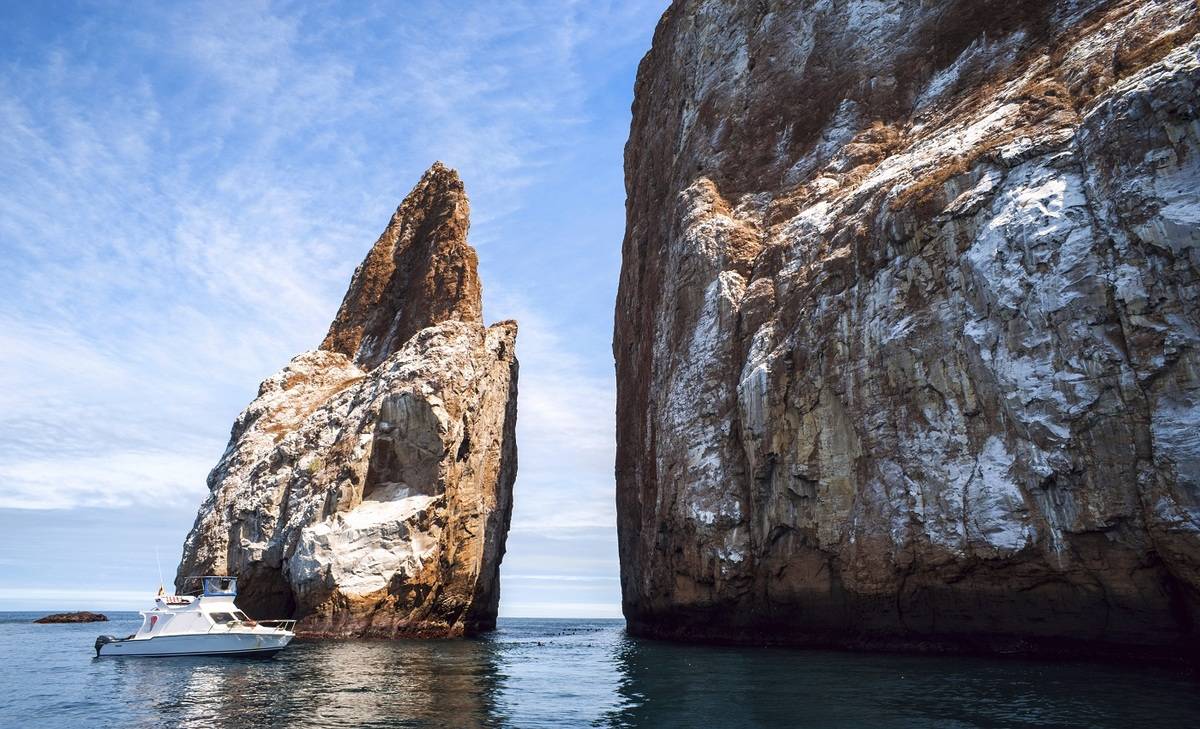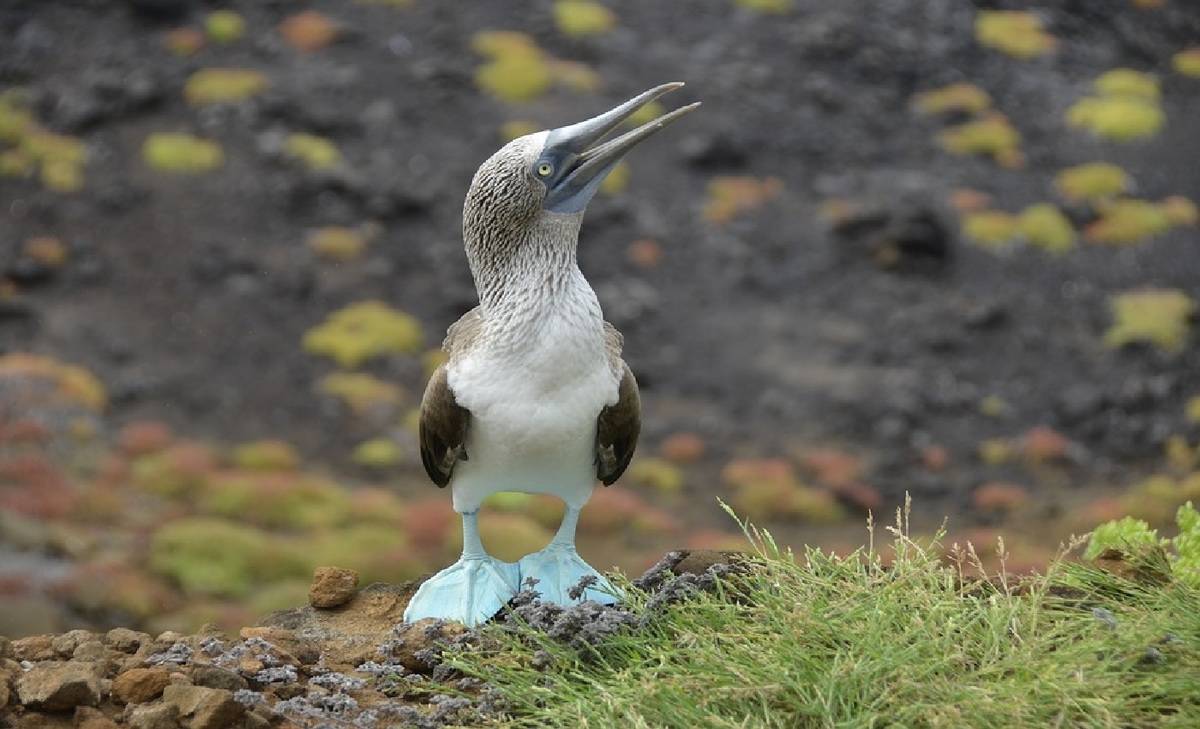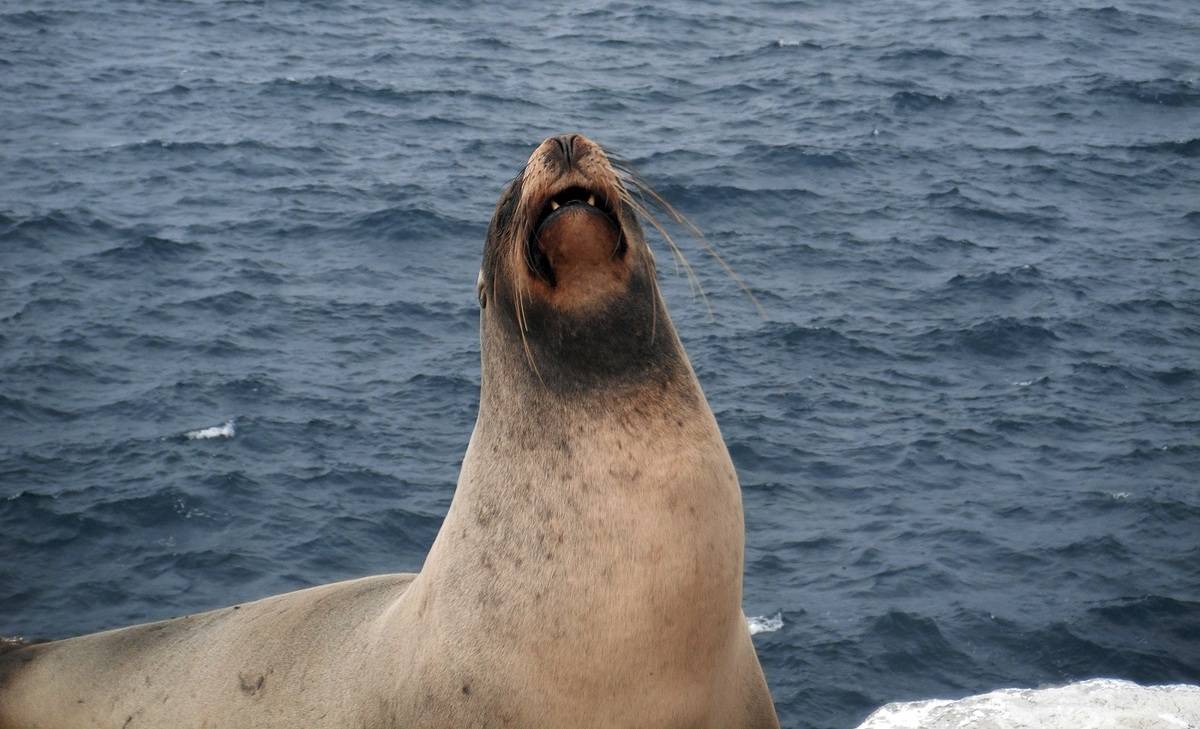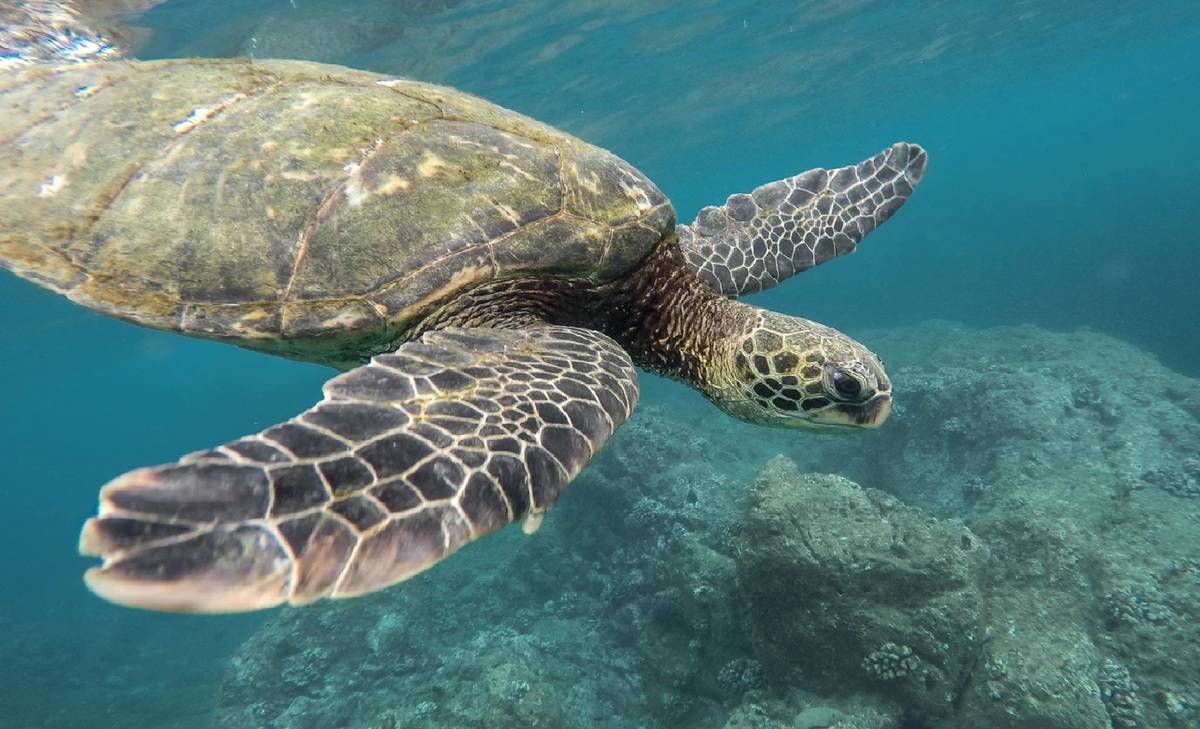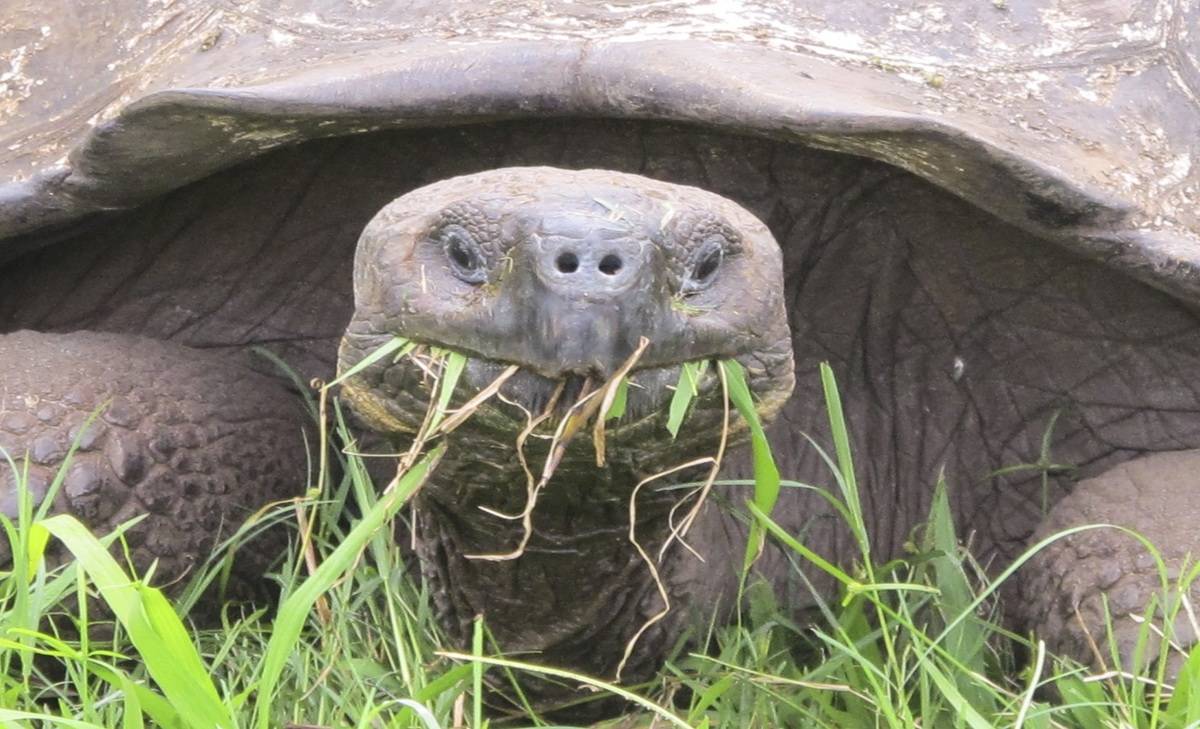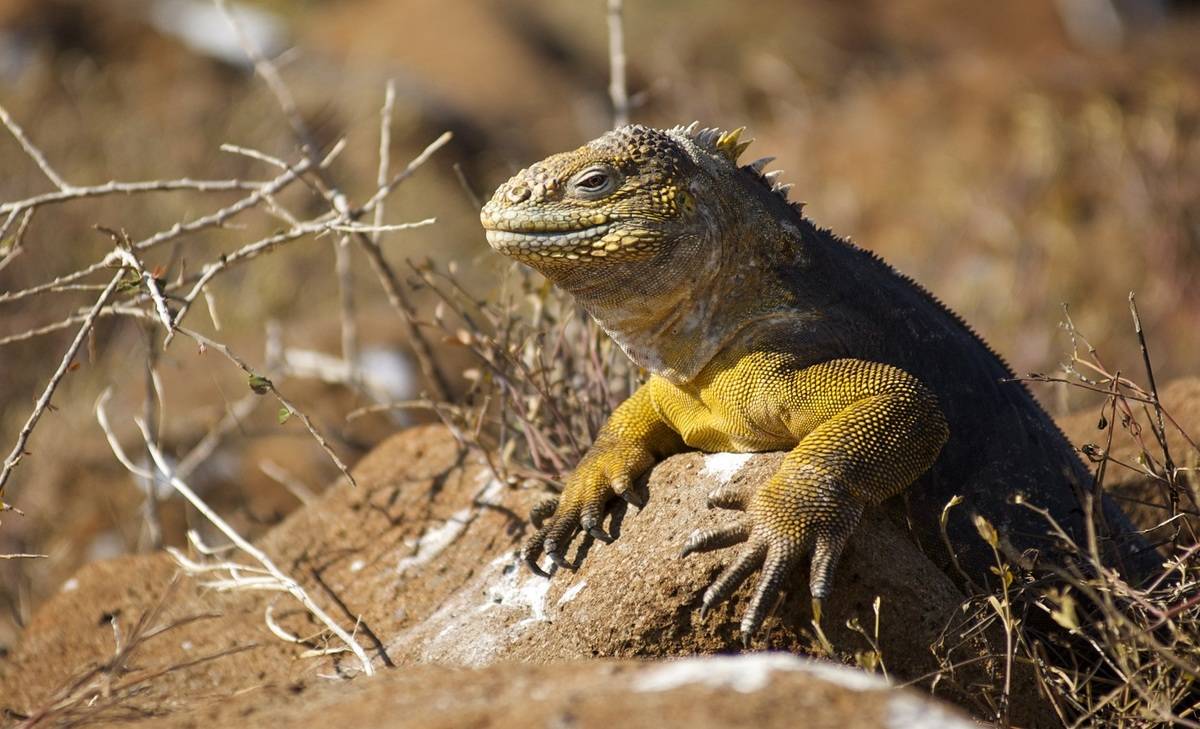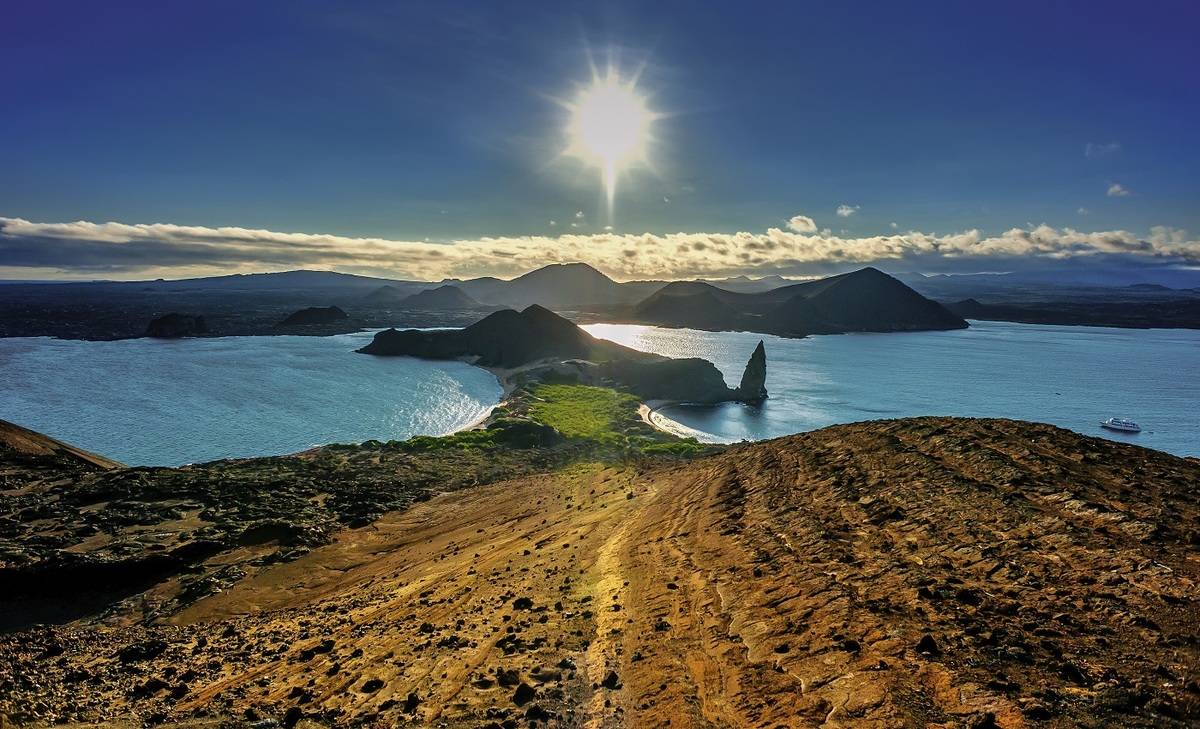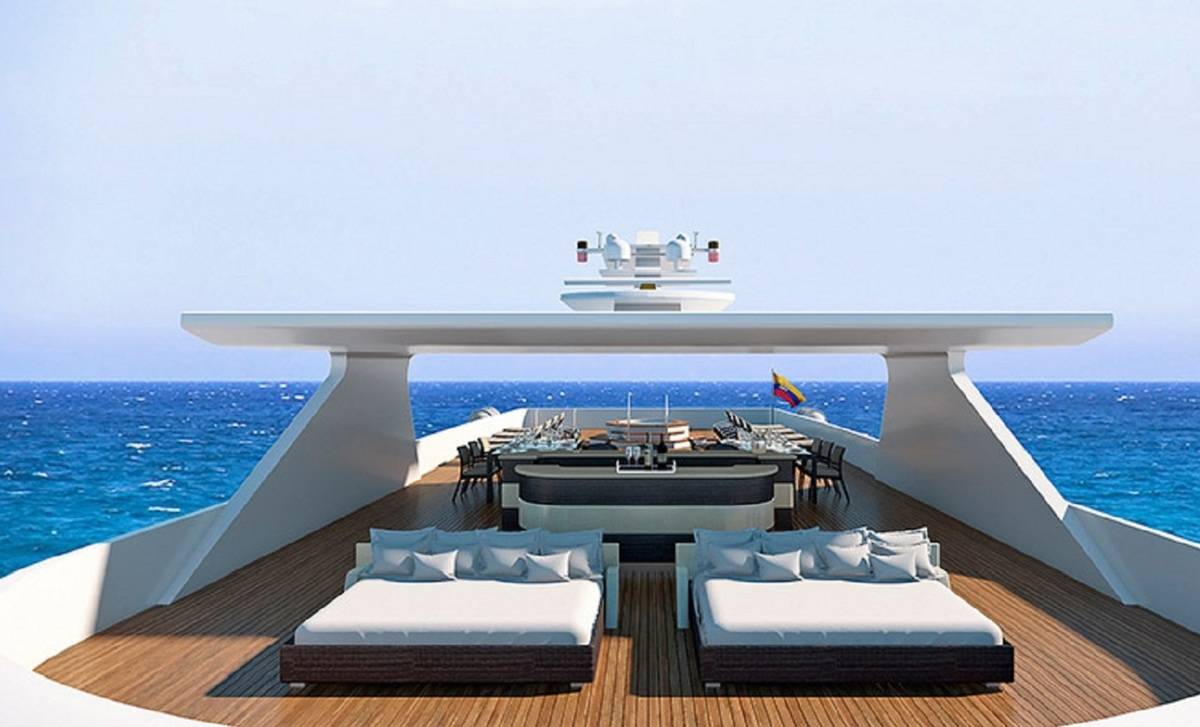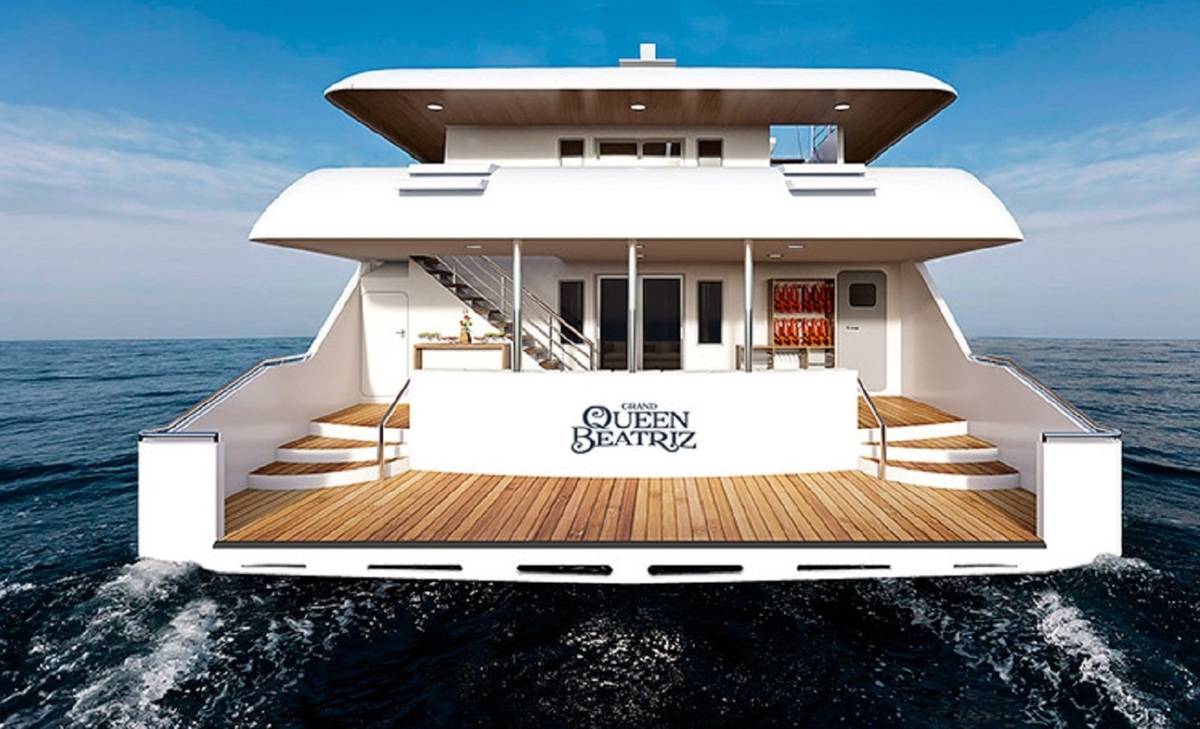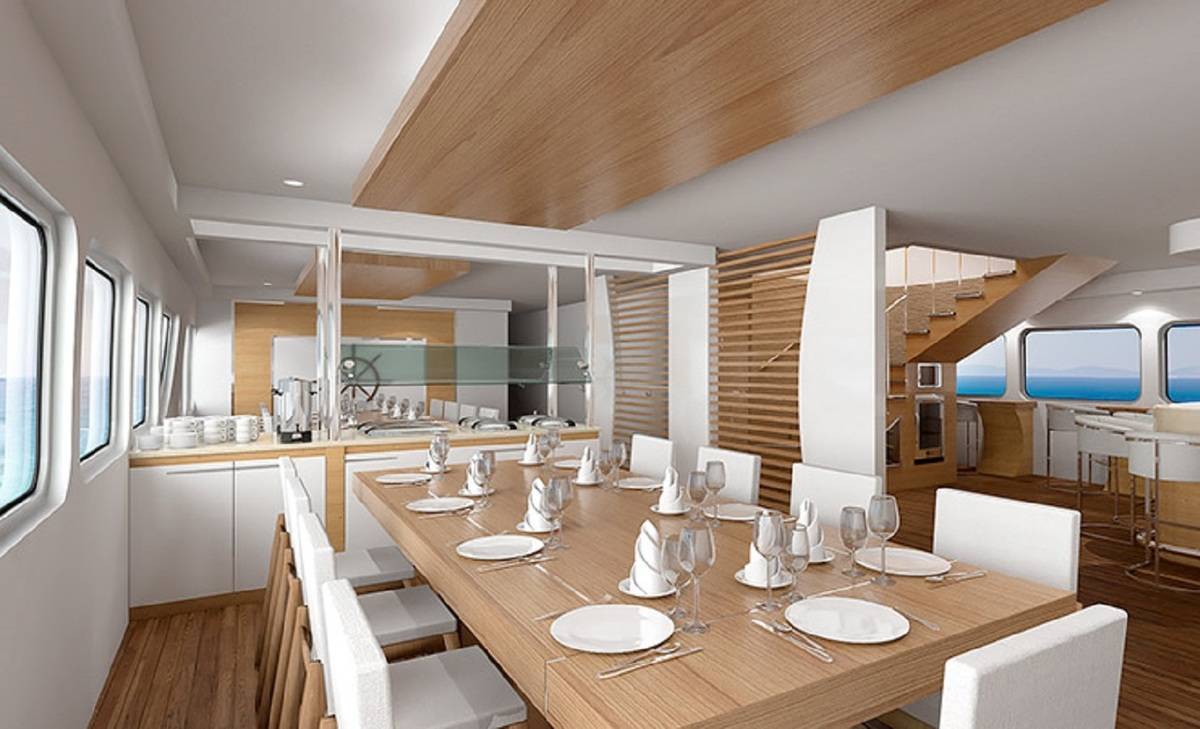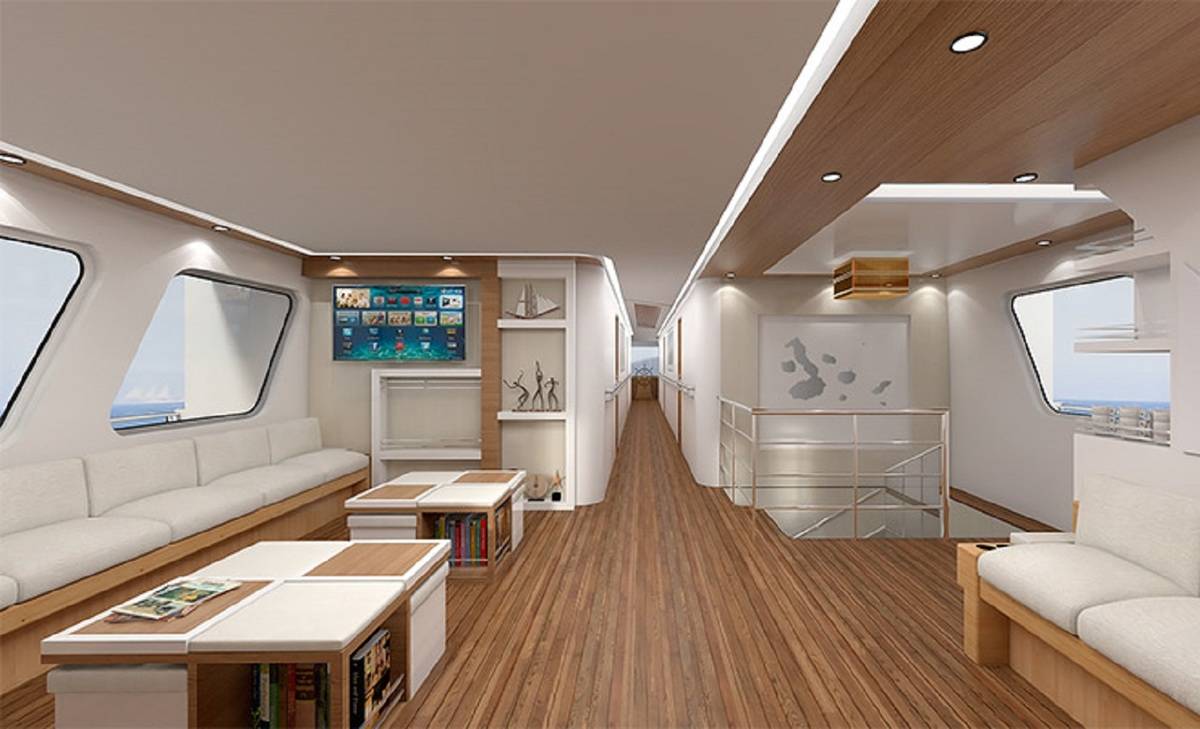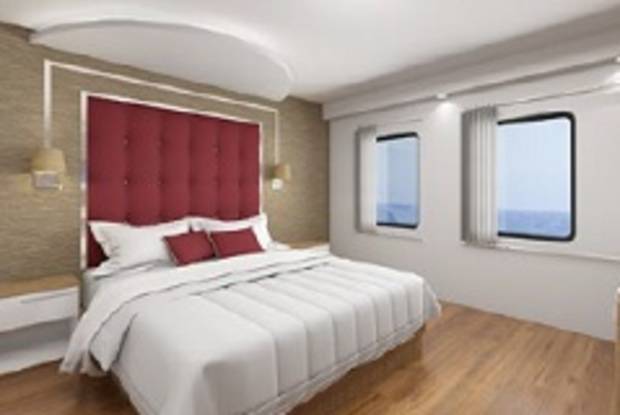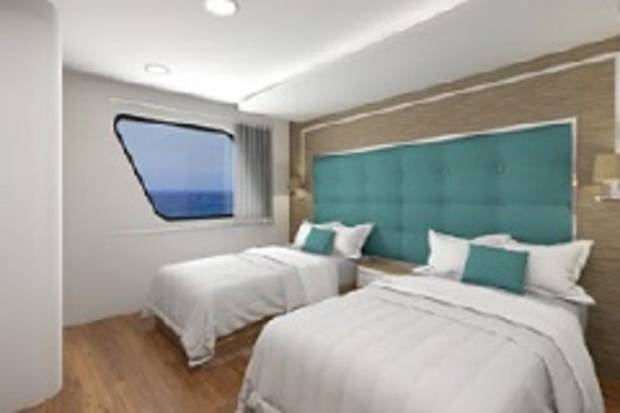Central & East Islands
8 Days - Grand Queen Beatriz
Swim with sea lion, befriend a giant tortoise and snorkel with starfish, penguins and reef sharks over 8 incredible days in the Galapagos. Luxury catamaran Grand Queen Beatriz will ensure you travel in style and comfort whilst travelling between the central, eastern and southern islands.

Home » 8 Day Grand Queen Beatriz: Central & East Islands (C)
Itinerary Highlights:
- Swim beside sea lions on Santa Fe Island
- Snorkel with reef shark, turtles and tropical fish at Gardner Bay
- Visit Bartolome Island, one of the most spectacular volcanic landscapes in the Galapagos
- Walk on Pahoe-Hoe lava from an eruption that occurred in 1897 at Sullivan Bay
- Have close encounters with giant tortoises at Charles Darwin Research Station
Itinerary in Brief:
- Day 1: Santa Cruz Highlands
- Day 2: South Plaza & Santa Fe
- Day 3: Bahia Gardner - Punta Suarez
- Day 4: Punta Pitt - Isla Lobos
- Day 5: San Cristobal Interpretation Centre - Cerro Colorado
- Day 6: Bartolome Island - Sullivan Bay
- Day 7: Espumilla Beach - Buccaneer Cove
- Day 8: Santa Cruz - Charles Darwin Research Station

Day 1: Santa Cruz Highlands
Welcome to the Galapagos! You will be met in the arrival hall of the airport by a transfer guide and transferred to your ship, anchored on the other side of Santa Cruz Island. Once on board, cabins will be assigned and you get to meet our crew members and get to know your naturalist guide while enjoying a delicious lunch. After lunch you will embark on your first excursion and head into the highlands of Santa Cruz for a total change of scenery. Beginning at the coast, you travel across Santa Cruz through the agricultural region and into the misty forests, where you can see the unique scalesia cloud forest and spend time observing giant tortoises in their natural habitat. Look out for the abundant bird life including different species of Darwin finches, woodpeckers, warbler finches and vermillion flycatchers.
Day 2: South Plaza - Santa Fe
Santa Fe Island is home to many curious sea lions eager for swimming partners! It’s a lovely place to take a dip, offers a dense concentration of wildlife, and is a fantastic place to see many of the stars of the Galapagos in one relatively small area. Expect to see Galapagos hawks, land iguanas, a variety of finches, Galapagos mockingbirds, sea lions, marine turtles, frigate birds, Galapagos doves and lava lizards. It’s a naturally beautiful island as well with one of the most attractive coves in the archipelago and the jade-green waters are ideal for snorkeling. A trail follows the coast into the opuntia forest, where you see Santa Fe's trees - the largest in the Galapagos. The island is also home to a unique sub-species of land iguanas. Hiking towards the cliffs on Santa Fe will lead you to a forest of prickly pear cactus. A member of the cactus family, their name comes from the pear-shaped fruit the plant produces. Santa Fe is home to endemic land iguanas. Once back at the beach you will have free time to snorkel back in the lagoon. Playful sea lions pups and florescent fish make for fascinating company. A small island, Plaza Sur is nonetheless a place of great beauty, where you will get close to sea lions and onto trails past one of the Galapagos’ largest land iguana populations, resting amid cacti and volcanic landscapes colored bright red and green by sesuvium. The island’s rugged southern cliffs are an excellent place to spot tropicbirds and swallow-tailed gulls, as well as the 'Gentlemen’s Club’, a gathering of male sea lions either too young or too old to be beach masters!
Day 3: Bahia Gardner - Punta Suarez
Today you will cruise to the island of Española - the southernmost island of the Galapagos and one of the most spectacular. Because of its remote location, this island has a large population of endemic fauna. It is the breeding site for nearly all of the world's 12,000 pairs of waved albatrosses and also home to colonies of blue-footed and masked boobies. Trails from the golden beaches, where sea lions bathe and marine iguanas make their way towards the water, will lead you right through the middle of booby colonies, and Galapagos doves and mockingbirds are also often seen. You will also visit the beautiful white sandy beaches at Bahia Gardner, which are great places for swimming and relaxing. The rocks off the coast provide excellent snorkeling opportunities, with reef sharks, turtles and many species of tropical fish, including surgeon and angelfish, often seen. The small white-tipped reef sharks are also often spotted resting under the rocks.
Day 4: Punta Pitt - Isla Lobos
This morning you will visit Punta Pitt on the eastern end of San Cristobal Island. Walk to the top of the volcanic hill for expansive views of the sparsely vegetated area. A variety of seabirds nest here, including blue-footed boobies and frigates. On a 'panga' ride you can observe the three varieties of boobies nesting in the Galapagos and enjoy a snorkel from the beach. Close by you will pass through Leon Dormido (Kicker Rock), which is a magnificent rock in the middle of the sea, the shape resembling a sleeping lion. The rock rises 150 meters above the surface and is divided into two parts by a narrow channel. You cruise through the channel with nesting seabirds on either side of the boat, tropic birds overhead, marine iguanas in the water and many sea lions present including many resting on the rocks. Snorkeling gives us the opportunity to see Galapagos sharks, and possibly a hammerhead shark among sea turtles and an incredible biodiversity of invertebrates on the rock wall. You will also visit Isla Lobos, a tiny island almost touching San Cristobal Island. This is the perfect time to witness the always friendly sea lions as they play in the calm shallow waters here. Blue-footed boobies, frigate birds and marine iguanas are also easily seen.
Day 5: San Cristobal Interpretation Centre - Cerro Colorado
Visit San Cristobal Interpretation Centre in the morning. This centre brings the history and geography of the archipelago to life, from its volcanic origins to the present day. The human history exhibit offers an insight into the discovery and colonization of the Galapagos, and the reality of the problems the islands face today is also explored. This afternoon you will travel into the interior of the island to visit the highlands site of ‘Galapaguera of Cerro Colorado’ (Red Hill) where the national park has established a breeding program and information center for tortoises. Here, you will be able to see giant tortoises in their natural habitat and learn all about their origin, evolution and their threatened future.
Day 6: Bartolome Island - Sullivan Bay
Isla Bartolomé (Bartolomé Island) is one of the most spectacular volcanic landscapes in the Galapagos, full of parasitic spatter cones, lava flows, Galapagos penguins and lava lizards.
It is a relatively new island in the archipelago and traces of its volcanic past can be seen everywhere, as evidenced by the amazing lunar-like landscape. The Pinnacle Rock is one of the most photographed sites in the Galapagos – an abrupt jag of rock protruding from the earth like a tooth, while nearby two golden bays back onto each other.
You can hike to the top of a once-active volcano here, and enjoy superb views across to Sullivan Bay, on nearby Santiago Island. If you are in luck you might catch a glance of the Galapagos Hawk here. You also have the opportunity to go snorkeling with plenty of tropical fish, starfish, white-tipped reef sharks, rays and hopefully penguins. On Santiago's eastern coast sits Bahia Sullivan, also known as James Island. Here you walk on Pahoe-Hoe lava, from an eruption that occurred in 1897, and witness the colonization of plant species since the last eruption. Hopefully we will see some marine iguanas, Sally Lightfoot crabs, sea lions, finches, turtles, sharks and penguins. On a walk, your guide will explain the geological history of the islands.
Day 7: Espumilla Beach - Buccaneer Cove
Today you will visit some wonderful places. Espumilla Beach, on the northern coast of Santiago Island in James Bay, is one of the most idyllic locations in the Galapagos Islands and is an important nesting site for marine turtles. With large waves, it is also often a favorite amongst beach lovers. Potentially we will see Galapagos hawks up close, ghost crabs, blue-footed boobies (often plunging for fish) and brown pelicans. It is also well known for its palo santo forest and some extraordinary lava formations.
This morning you will also visit Caleta Bucanero (Buccaneer Cove), a natural monument of rocks caused by sea erosion. This cove was used by pirates to careen their ships. It is also where Darwin camped for nine days while making his study of the islands and their wildlife. If conditions are favourable, you can enjoy some further snorkeling. Port Egas is a black sand beach located on the west side of James Bay and northwest of Santiago Island. South of the beach is Sugarloaf Volcano, which has deposits of volcanic tuff. This site is named Puerto Egas, after Hector Egas who last attempted to mine salt here. The walk along the beach offers hundreds of marine iguanas and Galapagos sea lions.
Day 8: Santa Cruz - Charles Darwin Research Station
The small town of Puerto Ayora is the economic hub of the archipelago and is also home to the Charles Darwin Research Station. The station's visitor center and museum offer a great insight for anyone interested in the archipelago's natural and human history, and keen to learn more about conservation efforts to preserve the unique ecosystems of the Galapagos. It also offers our best chance for close-up encounters with giant tortoises, and we can see many newborn and young giant turtles - part of the breeding program to reintroduce them to their natural habitat. This will be your final excursion before you return to the airport in Baltra for your flight back to Quito.
Cabin Details
Standard Cabin
Approx. 20m², 2 single beds or 1 queen or king bed, private bathroom with hot water, air conditioning, reading lamps & picture windows.
Junior Balcony Suite
Approx. 20m², 2 single beds or 1 queen or king bed, private bathroom with hot water, air conditioning, reading lamps, picture windows & private balcony.
Deluxe Balcony Suite
Approx. 20m², 2 single beds or 1 queen or king bed, private bathroom with hot water, air conditioning, reading lamps, picture windows & private balcony.
Grand Queen Beatriz Deckplan

Specifications
- Year built: 2018
- Capacity: 16 passengers.
- Cabin Sizes: 24,75 Mts2
- Bath Size: 3,78 Mts2
- Balcony Size:1x4 Mts.
- Hull Type: Naval Steel
- Length: 30.20m.
- Life Boats: 2 each of them carry 15 pax
- Life Jackets: 20 life jackets type 1 and 16 for the zodiacs plus 4 for kids.
- Speed: 12 knots.
- Water equipment: 25 sets of snorkels and fins, 25 wetsuits
Whats included?
- Lodging on board in a cabin with private facilities
- All meals, water, coffee and tea
- All excursions as mentioned in the itinerary (itinerary subject to change) with English speaking naturalist guide
- All transfers in Galapagos (airport-yacht-airport transfers are only guaranteed if the flight has been booked through us)
- Snorkeling gear (masks, flippers and snorkel) & wetsuit (short or long)
What’s not included?
- Roundtrip flight to Galapagos Islands
- Galapagos National Park entrance fee (USD 100 pp, subject to change)
- Transit Control Card (USD 20 pp, subject to change)
- Airport transfers in Galapagos (only included if the Galapagos flight has been booked through us on the scheduled cruise dates. * If your arrival/departure is different than our scheduled cruise flights, the shuttle service is not included)
- Soft and alcoholic drinks
- Tips
- Travel insurance and other items of personal nature


